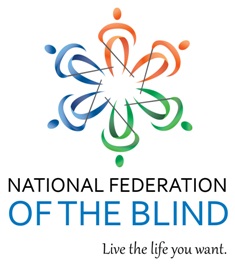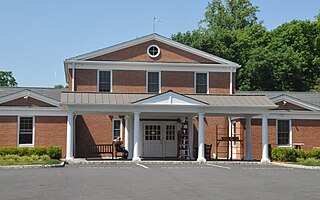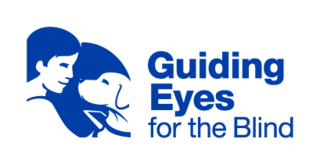
Guide dogs are assistance dogs trained to lead blind or visually impaired people around obstacles. Although dogs can be trained to navigate various obstacles, they are red–green colour blind and incapable of interpreting street signs. The human does the directing, based on skills acquired through previous mobility training. The handler might be likened to an aircraft's navigator, who must know how to get from one place to another, and the dog is the pilot, who gets them there safely. In several countries guide dogs, along with most other service and hearing dogs, are exempt from regulations against the presence of animals in places such as restaurants and public transportation.

In general, an assistance dog, known as a service dog in the United States, is a dog trained to aid or assist an individual with a disability. Many are trained by an assistance dog organisation, or by their handler, often with the help of a professional trainer.

A working dog is a dog used to perform practical tasks, as opposed to pet or companion dogs.

A Schnauzer, plural Schnauzer, lit. translation "snouter") is a dog breed type that originated in Germany from the 14th to 16th centuries. The term comes from the German word for "snout" and means colloquially "moustache", or "whiskered snout", because of the dog's distinctively bearded snout. Initially it was called Wire-Haired Pinscher, while Schnauzer was adopted in 1879.

The Miniature Pinscher, also known as the Zwergpinscher, and Min Pin, is a small breed of dog of the pinscher type originating in Germany. The breed's earliest ancestors may have included the German Pinscher mixed with Italian greyhounds and dachshunds.
Service and supports for people with disabilities are those government or other institutional services and supports specifically provided to enable people who have disabilities to participate in society and community life. Some such services and supports are mandated or required by law, some are assisted by technologies that have made it easier to provide the service or support while others are commercially available not only to persons with disabilities, but to everyone who might make use of them.

Dorothy Leib Harrison Wood Eustis was an American dog breeder and philanthropist, who founded The Seeing Eye, the first dog guide school for the blind in the United States. She was inducted into the National Women's Hall of Fame in 2011.

The Dobermann, or Doberman Pinscher in the United States and Canada, is a medium-large breed of domestic dog that was originally developed around 1890 by Louis Dobermann, a tax collector from Germany. The Dobermann has a long muzzle. It stands on its pads and is not usually heavy-footed. Ideally, they have an even and graceful gait. Traditionally, the ears are cropped and posted and the tail is docked. However, in some countries, these procedures are now illegal and it is often considered cruel and unnecessary. Dobermanns have markings on the chest, paws/legs, muzzle, above the eyes, and underneath the tail.

The National Federation of the Blind (NFB) is an organization of blind people in the United States. It is the oldest and largest organization led by blind people in the United States. Its national headquarters are in Baltimore, Maryland.

The Doberman Gang is a 1972 film about a talented animal trainer who prepares a pack of six Doberman Pinschers to commit a bank robbery at the behest of a ruthless heist planner. The six dogs were all named after famous bank robbers. Their names were Dillinger, Bonnie, Clyde, Pretty Boy Floyd, Baby Face Nelson, and Ma Barker.

The Seeing Eye, Inc. is a guide dog school located in Morristown, New Jersey, in the United States. Founded in 1929, the Seeing Eye is the oldest guide dog school in the U.S., and one of the largest. The Seeing Eye campus includes administrative offices, dormitory residence for students, a veterinary care center, and kennels; there is also a breeding station in Chester, NJ. The Seeing Eye, a founding member of the U.S. Council of Guide Dog Schools and a fully accredited member of the International Guide Dog Federation, is a lead researcher in canine genetics, breeding, disease control, and behavior.
Guide Dogs for the Blind (GDB) is a guide dog school located in the United States, with campuses in San Rafael, California, and Boring, Oregon. It was founded in 1942 by Lois Merrihew and Don Donaldson to help veterans who had been blinded in World War II. Guide Dogs for the Blind has about 2100 Guide Dog teams across the United States and Canada.

Guiding Eyes for the Blind is one of eleven accredited schools in the U.S. for training guide dogs—dogs trained to lead the blind and visually impaired. It houses a 10-acre (40,000 m2) headquarters, training center, and veterinary clinic in Yorktown Heights, New York, and it also operates a canine development center in Patterson, New York, and a training site in White Plains, New York.
NEADS Inc. is a nationwide American 501(c)3 nonprofit program that provides trained service dogs to deaf and disabled Americans.

The Lighthouse of Houston is a private, non-profit education and service center dedicated to assisting blind and visually impaired people in the Houston, Texas metropolitan area to live independently. The Lighthouse serves approximately 9,000 people each year and is a member agency of the United Way of Greater Houston.
Ch. Ferry v. Rauhfelsen of Giralda also known as Ferry, a Doberman Pinscher, best known for being Best in Show at the Westminster Kennel Club Dog Show in both 1939 while owned by Geraldine Rockefeller Dodge. He was the grandfather of two-time champion, Rancho Dobe's Storm.

Morris Frank was a co-founder of The Seeing Eye, the first guide-dog school in the United States. He traveled the United States and Canada to promote the use of guide dogs for people who are blind or visually impaired, as well as the right of people with guide dogs to access restaurants, hotels, transportation, and other places that are open to the general public.

12 South African Infantry Battalion was a horse, dog and motorbike assisted infantry unit of the South African Army, which provided horse-mounted infantry and dog handlers to the army for defence purposes.

Blind Love: A Holocaust Journey Through Poland with Man’s Best Friend is a 2015 documentary film about blind Israelis traveling to Poland with the help of their guide dogs, to learn about the Holocaust. Footage includes blind participants taking part in the 2012 and 2013 March of the Living programs. The film is narrated by Michael Enright of the Canadian Broadcasting Corp.
2. Gibbs, Margaret. Leader Dogs for the Blind. Faifax, VA: Denlinger's Publishers, 1982.















